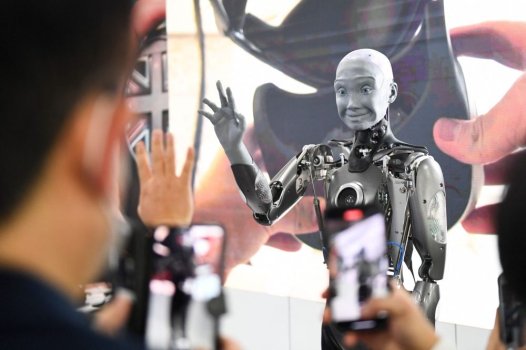Artificial intelligence is all about productivity, right? A.I.-based software programs, such as Hubstaff, record keyboard strokes, mouse movements, and the websites employees visit when they work. Time Doctor uses webcams to shoot videos and pictures of users’ screens at periodic intervals to check whether employees are at their computers. Isaak monitors employee interactions, combining its data with personnel records to identify the employees that are most collaborative. And Enable measures the time employees take to complete tasks, suggests ways they can speed up, and assigns productivity scores. Managers can use the grades to identify employees who are worth retaining—and those who aren’t.
Whatever you may privately feel about the technology, A.I. is here to stay. But have business leaders developed the right attitude to productivity in the A.I. Age?
Machine productivity, measured by the quantitative output produced every minute, hour, or day, can be mechanically monitored and managed. But we humans aren’t exactly machines. Science shows that we work best when we mix work with breaks, and that we’re most motivated when we enjoy ownership and independence. These “human” factors demand a nuanced perspective on productivity that digital technologies may not yet possess. Still, shunning the technology isn’t the answer; used in the right way, A.I. can benefit both employees and businesses, as a recent BCG–MIT research project has shown. The key is for companies to ensure that the productivity of both humans and A.I. rises as they work together, and that they bring out the best in each other.
Continue reading: https://fortune.com/2022/01/07/artificial-intelligence-ai-productivity-challenges-human-element/
Whatever you may privately feel about the technology, A.I. is here to stay. But have business leaders developed the right attitude to productivity in the A.I. Age?
Machine productivity, measured by the quantitative output produced every minute, hour, or day, can be mechanically monitored and managed. But we humans aren’t exactly machines. Science shows that we work best when we mix work with breaks, and that we’re most motivated when we enjoy ownership and independence. These “human” factors demand a nuanced perspective on productivity that digital technologies may not yet possess. Still, shunning the technology isn’t the answer; used in the right way, A.I. can benefit both employees and businesses, as a recent BCG–MIT research project has shown. The key is for companies to ensure that the productivity of both humans and A.I. rises as they work together, and that they bring out the best in each other.
Continue reading: https://fortune.com/2022/01/07/artificial-intelligence-ai-productivity-challenges-human-element/

